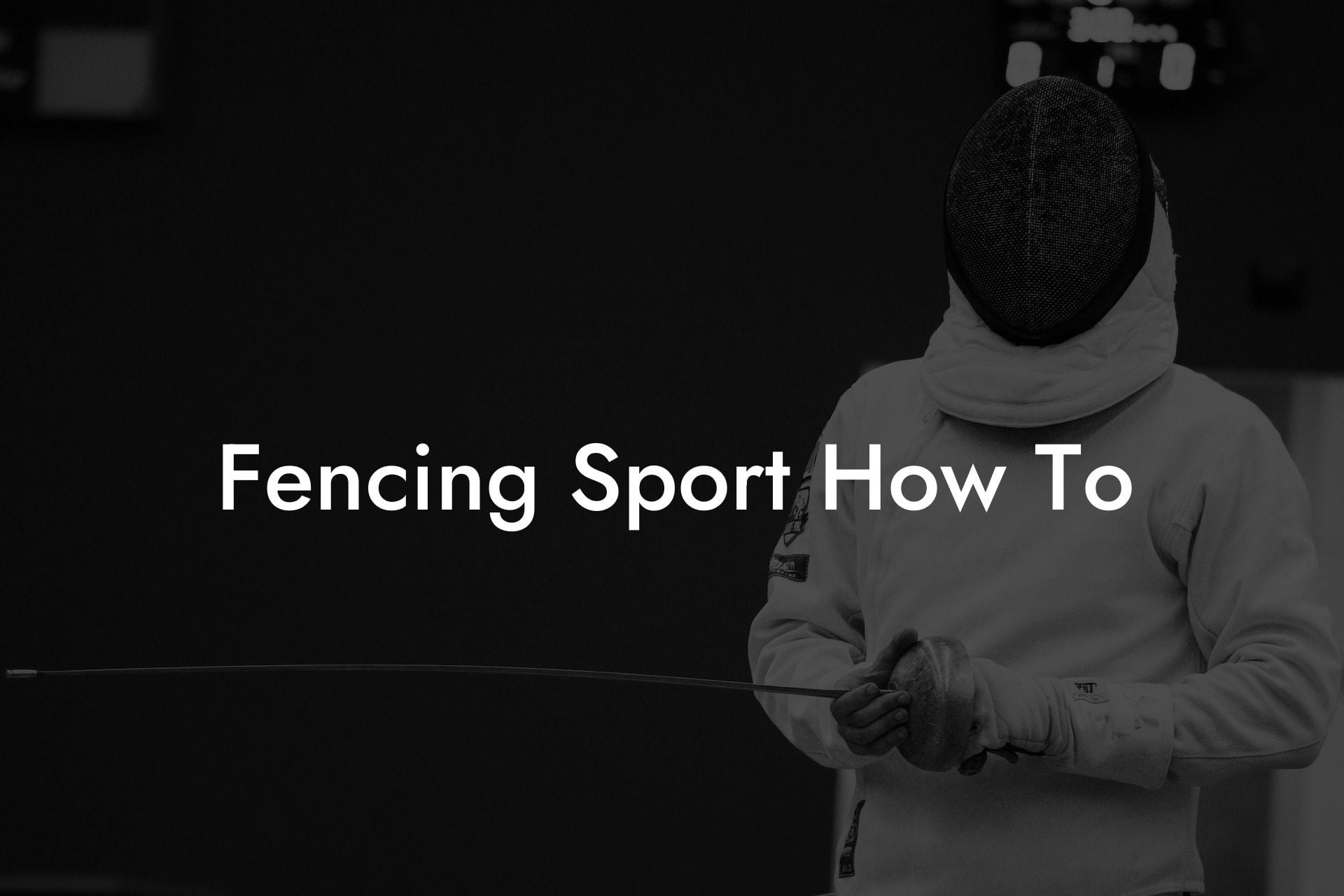Discover the exciting world of fencing sport! Learn the basics, essential equipment, and techniques to get started in this elegant and strategic sport. In this comprehensive guide, we will walk you through everything you need to know to step onto the piste and embark on your fencing journey.
Fencing Sport How To Table of Contents
Understanding the Basics of Fencing Sport
Fencing is a highly-skilled combat sport that emphasizes speed, agility, and strategy. There are three main types of fencing: foil, epee, and sabre. Each discipline requires different techniques, skills, and equipment.
Foil:
This is a light, flexible weapon used for thrusting. Points are scored by making contact with the tip of the foil on the opponent's torso, with right-of-way rules determining which fencer scores in cases of simultaneous hits.
Epee:
The epee is a heavier, stiffer weapon used for thrusting. Points can be scored with the tip of the epee on any part of the opponent's body, and there are no right-of-way rules in epee fencing.
Sabre:
Sabre is a pronounced slashing weapon. Points are scored with either the edge or the tip of the blade, primarily targeting the upper body, including the head and arms. Sabre fencing follows right-of-way rules similar to foil.
Essential Fencing Equipment
Safety and protection are crucial in fencing, and appropriate equipment is necessary to be able to participate in the sport. Here is a basic list of essential fencing equipment:
- Fencing mask: A mask protects the face and head during bouts. Masks differ in design according to the fencing discipline.
- Fencing jacket: A sturdy padded jacket designed to absorb impacts and prevent any harm to the body.
- Plastron: A protective padded underarm guard that is worn underneath the fencing jacket, providing additional safety.
- Glove: A single fencing glove is worn on the weapon hand for protection and improved grip.
- Breeches: Knee-length pants made from heavy-duty material designed to prevent injury to the legs.
- Socks and shoes: High-length socks and specialized fencing shoes provide comfort, support, and grip during bouts.
- Fencing weapon: The choice of weapon is dependent on the discipline you are choosing (foil, epee, or sabre).
Basic Techniques and Footwork
In addition to understanding the different disciplines and equipment needed, mastering the basic fencing techniques and footwork is essential for any fencer.
- En Garde: The basic fencing stance where both feet are positioned on the ground, with one foot slightly forward and the other foot facing perpendicular to the opponent.
- Advance: A forward movement intended to close the distance with the opponent.
- Retreat: A backward movement used to maintain distance and avoid the opponent's attack.
- Lunge: A forward movement involving an extension of the front leg and the weapon arm, aiming to reach the opponent for scoring.
- Parry: A defensive action to block the opponent's weapon, preventing them from scoring.
- Riposte: An offensive action following a successful parry, aiming to score a point on the opponent.
Fencing Sport How To Example:
Imagine a fencing bout between two foil fencers. The fencer on the left (A) advances towards the fencer on the right (B). As fencer A lunges to score a point, B swiftly executes a parry, deflecting the attack. Following the parry, fencer B immediately launches a riposte, landing a hit on fencer A's torso and scoring a point.
Congratulations, you have taken your first step into the thrilling world of fencing sport! Now that you have a foundational understanding of the disciplines, equipment, and techniques required for success on the piste, we encourage you to continue exploring the vast resources available on Anchorage Fencing Club. Share this article with friends who may also be interested in the sport, and join a local fencing club to refine your skills further. The fencing journey awaits!













